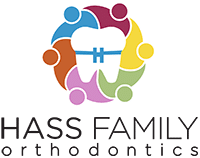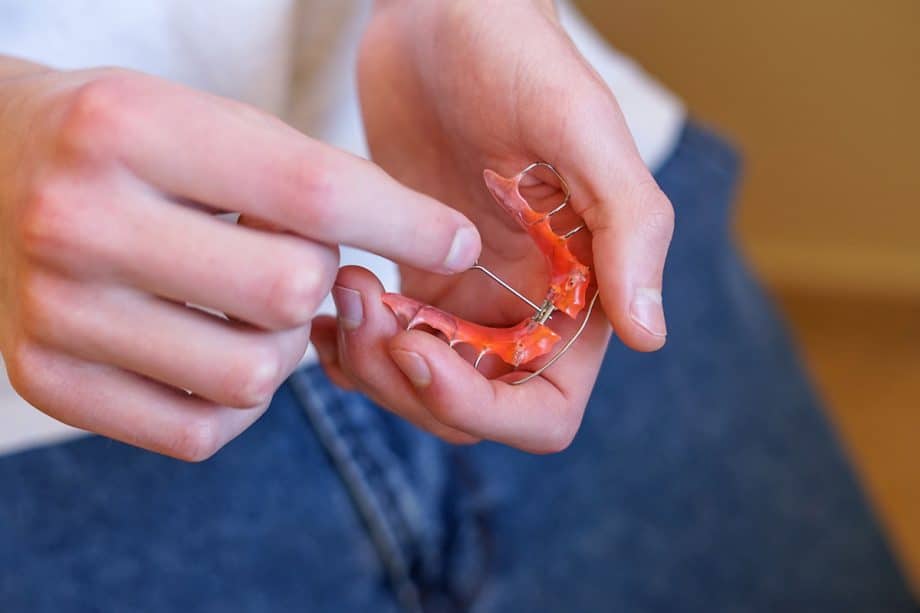Starting orthodontic care is an exciting step, but it often comes with a learning curve—especially when your child receives a palate expander. These devices gently widen the upper jaw, creating more space for adult teeth to emerge and improving the overall structure of your child’s smile. While the benefits are long-term, the adjustment period can be a little tricky—particularly when it comes to eating.
At Hass Family Orthodontics, we want to make every part of your child’s orthodontic treatment as easy as possible, including their transition to eating with a palate expander. In this guide, we’ll explain what to expect, how to choose the right foods, and how to keep the appliance clean so your child stays comfortable and confident throughout their treatment.
What Is a Palate Expander?
A palate expander is an orthodontic appliance that gradually widens the upper jaw using gentle, consistent pressure. It’s typically used in children and pre-teens, whose jaws are still developing. Since the two halves of the upper jaw haven’t fused yet, we can guide their growth to create more space for teeth alignment and even improve airway function.
The expander is attached to the upper molars and has a small screw in the center that’s turned regularly (usually with a special key). Each turn widens the appliance slightly, pushing the jaw outward in a controlled way. This can help prevent overcrowding, reduce the need for tooth extractions, and set the stage for a beautiful, healthy smile.
Soft Foods Are Your Best Friend
During the first few days of wearing a palate expander, your child will likely experience some soreness or pressure in the roof of their mouth. This is completely normal, but it may make chewing a challenge. Soft foods can ease the transition.
Think of this period as an excuse to break out the comfort foods. Smoothies, mashed potatoes, applesauce, scrambled eggs, yogurt, pudding, and soup are all great options. These foods don’t require much chewing and are less likely to get stuck in or damage the appliance. Ice cream and milkshakes can even help soothe tenderness in the mouth, turning discomfort into a treat.
Once your child gets used to the expander, they can gradually add more textures to their diet—but soft foods will continue to come in handy on adjustment days.
Cut Everything into Bite-Sized Pieces
Even after the initial soreness wears off, eating with a palate expander requires a bit of strategy. One of the simplest and most effective tips? Cut food into small, manageable bites.
Large bites require more chewing effort and increase the chance of food getting caught between the expander and the roof of the mouth. They may also lead to choking or gagging, especially while your child is still adjusting to their new appliance.
Cutting foods like sandwiches, fruits, and cooked veggies into smaller pieces helps your child chew more comfortably and safely. Pairing bites with small sips of water can also help wash down any lingering bits that might get stuck around the appliance.
Avoid Foods That Can Damage the Expander
Some foods are simply off-limits when wearing a palate expander. Anything that’s sticky, chewy, or hard can loosen or break the appliance—and that means additional appointments and a longer treatment time.
Sticky foods like caramel, taffy, and gummy candies can pull at the appliance or wedge into tight spaces. Hard foods such as popcorn kernels, ice, pretzels, and nuts can cause bending or breakage. Even dense bread like bagels or crusty sourdough can be too much for a palate expander to handle.
We also recommend being cautious with crunchy fruits and vegetables. If your child wants apples or carrots, slice them thinly or steam them to soften the texture. Keeping their appliance intact means less hassle and more consistent results.
Stay Diligent with Oral Hygiene
Eating with a palate expander adds a layer of complexity to your child’s oral hygiene routine. Food can easily get trapped between the appliance and the roof of the mouth, creating a perfect environment for bacteria and plaque buildup.
That’s why we encourage extra attention to brushing and flossing. A soft-bristled toothbrush can help dislodge food from around the expander. Angle the brush carefully and take time with each area of the mouth.
Many families find that a water flosser (like a Waterpik) makes the job easier and more effective. These devices can flush out debris from areas a regular toothbrush or floss might miss.
Daily rinsing with water or a child-safe mouthwash can also help keep the mouth fresh and reduce the risk of cavities or bad breath. The cleaner the appliance stays, the more comfortable and effective the orthodontic treatment will be.
Helping Your Child Adjust to Eating With Confidence
It’s completely normal for kids to feel a little overwhelmed when they first start wearing a palate expander. The appliance can feel bulky, awkward, and even affect speech at first. Eating may be frustrating for a few days—but with our tips and a little encouragement, most children adapt quickly.
We suggest making it fun. Let your child help plan their soft food meals, or celebrate their progress with a sticker chart. Offer reassurance, model patience, and keep reminding them of the big-picture goal: a strong, healthy smile they’ll be proud to show off.
Our team is always here to help. If you have concerns about how your child is adjusting to their palate expander or eating habits, don’t hesitate to reach out.
Frequently Asked Questions About Palate Expanders
How long will my child need to wear a palate expander?
The duration varies depending on your child’s specific needs, but most palate expanders stay in place for about 3 to 6 months. This includes both the active phase (when the screw is turned to widen the jaw) and the retention phase (when the jaw is held in its new position). Your orthodontist will provide a personalized timeline during your child’s treatment.
Can a palate expander affect speech or swallowing?
Yes, it can—at least temporarily. Many children experience some changes in speech, particularly with sounds like “s” or “sh,” and swallowing may feel different at first. These effects are usually short-lived. Most kids adapt within a week or two as their tongue and muscles get used to the new appliance.
At Hass Family Orthodontics, we treat children and teens with compassion and care, helping them feel confident at every step of their orthodontic journey. If your child is preparing for or currently wearing a palate expander, we’re here to guide you through it. Contact us to schedule a visit or ask questions—we’re always happy to help.

